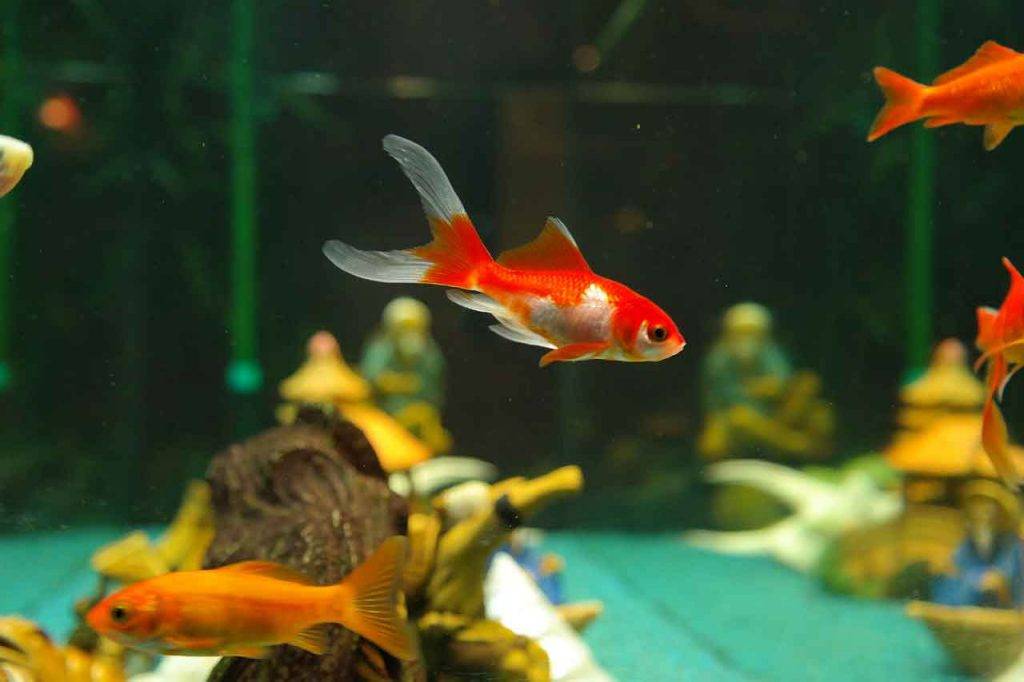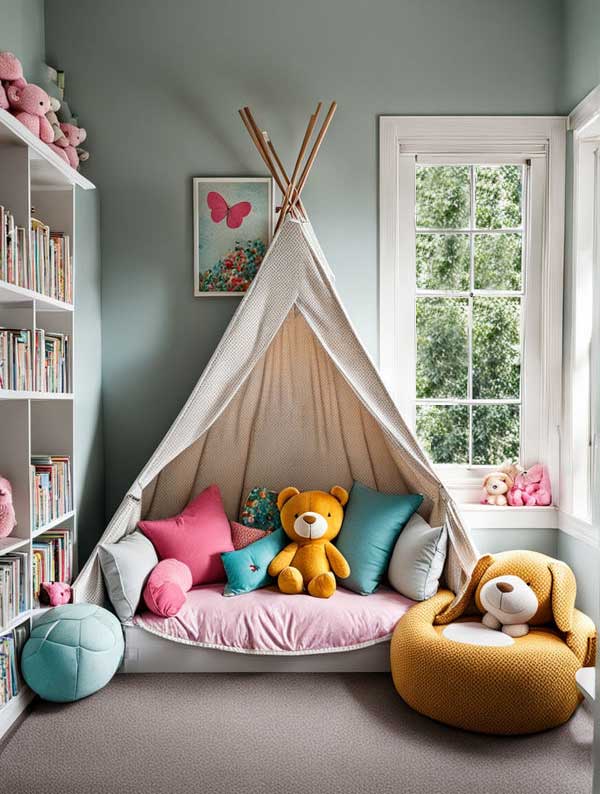This post may contain affiliate links which means we might earn a small commission if you decide to make a purchase through them (at no extra cost to you). Need more info? Click Here
When I grew up we always had a house full of pets! We had everything from cats to dogs to rats to fish to chickens and each of them still holds a special place in my heart to this day! If you’ve ever owned a pet who has crawled its way into your heart you know how special they are and just how much they mean to you.
Pets are especially wonderful for children! Not only do they teach responsibility, commitment, patience, respect, and compassion but they also can bring many hours of joy and companionship into a child’s life. When we think of pets, we usually think of dogs and cats, but there are many other awesome pets to consider for kids depending on their ages. Here are some of the best pet options to consider for your kids.
Guinea Pigs
Guinea pigs are a great option for children from around the age of 6 because, in general, they don’t scratch or bite. Also, because of their size, they are easier to handle than smaller pets such as hamsters. Guinea pigs, along with the other small rodents on our list could very well be the perfect pet for you if you live in a small apartment or house because they don’t take up too much room.
There are three main breeds of guinea pigs, but the most common is the English guinea pig, which is also known as the smooth-haired guinea pig. They come in many colors and are easy to care for. The Peruvian guinea pig is just as cute as the English guinea pig, but instead of being smooth-haired, it has long straight hair, while its cousin, the Abyssian guinea pig, has rough, wiry hair that needs regular brushing.
Guinea pigs are social animals and they really don’t like being on their own so you would need to adopt at least two of them. However, keep in mind that guinea pigs breed very easily so unless you want babies you will need to adopt either two females or two males!
| Size | 6 – 9 Inches. | |
| Lifespan | 4 to 8 Years. | |
| Cage Size | The ideal guinea pig cage size is 2 square feet per adult guinea pig. | |
| Food | Commercial guinea pig food. Hay. Veggies. Apples for treats (in moderation). | |
| Care | Change your guinea pigs water and food every day. Bedding must be changed every two days. Brush weekly – Smooth-haired guinea pigs. Brush daily – Long-haired guinea pigs. May need nail trimming. | |
| Pros | Guinea Pigs are very affectionate. Don’t smell very much. Easy to care for. Easy diet. | |
| Cons | Guinea pigs tend to be very shy and they can get spooked easily. Guinea pigs breed very easily so make sure you adopt either two males or two females. |

Rabbits
Rabbits are very cute and cuddly pets that are great for children and beginner pet owners. They are very intelligent and just like dogs, can be taught tricks! They form strong bonds with their owners and are generally very gentle and docile.
There are lots of different rabbit breeds and sizes making them a great pet for both indoors and outdoors. Just like other rodents, rabbits are very social and they love company so you will need to have at least two rabbits especially if you won’t have to much time to spend with them.
| Size | 9.5 Inches all the way up to 20 inches or more. |
| Weight | The average-sized pet rabbit is about 6 pounds. But they can go all the way up to 20 pounds for large breeds. |
| Lifespan | 5 – 10 Years. |
| Cage Size | The ideal rabbit cage size is at least four times the size of the adult rabbit (per rabbit). |
| Food | Commercial rabbit food. Hay. Fresh veggies. Fruit for treats (in moderation). |
| Care | Change food and water every day. Clean cage at least once or twice a week. Rabbits need at least 2 to 3 hours of exercise a day. Rabbits need company. |
| Pros | Very intelligent – rabbits can be trained to do tricks. Rabbits can be trained to use a litter box (with patience). Rabbits are easy to care for. Quiet. Pet rabbits love attention and bond with their owners. Rabbits are good pets for people with allergies. |
| Cons | Their cage can become smelly quickly if it isn’t cleaned regularly. Rabbits love chewing and scratching so you will need to rabbit-proof if they will free-roam. Rabbits can have sharp nails which might need to be trimmed. |
Which Rabbit Breed Is Best?
Hamsters
Hamsters are a very common pet choice for children. They are however better for older children because they can bite if not handled carefully. Just like the other rodents on our list, hamsters love company so you should adopt at least two so that they don’t get lonely.
Hamsters are very cute and very active and they are notorious escape artists so you will need to make sure that their cage is very secure so that they can’t get out!
Hamsters are also notorious hoarders and they especially love to stockpile food! This is important to know because you will need to regularly check their cage to make sure that they haven’t hidden food away that has gone old or rotten.
| Size | 6 Inches. |
| Lifespan | 2 Years. |
| Cage Size | The idea hamster cage size is 2 square feet per adult hamster. |
| Food | Commercial hamster food. Hay. Salad greens, veggies, fruit. Nuts, mealworms for treats (in moderation). |
| Care | Food and water must be changed every day. Regularly check for food that has been hidden. Your hamster’s cage must be washed once a week. The bedding must be changed twice a week. |
| Pros | Easy to care for. Hamsters are quiet (unless they have a noisy hamster wheel!). Don’t need lots of space. |
| Cons | Hamsters are nocturnal so they are mainly active at night. Hamsters are incredible escape artists! Can bite if handled incorrectly. Short lifespan. Hamsters love to chew. Hamsters are delicate so they need to be handled carefully. |
Mice
Mice are very lively little pets that are a good option if you don’t have very much space. There are quite a few different breeds of mice that can be kept as pets and they come in all sorts of beautiful colors. Just like their hamster counterparts, they are incredibly good at escaping so you will need to make sure that they have a secure cage.
Because mice are so small they can be difficult to handle for very young children so just like hamsters, they are better suited to older kids. Mice move very quickly so it is easy for them to easily escape if you aren’t careful. Because they are so active they do eat a lot so you will need to make sure that they always have food in their food bowl.
| Size | 5 – 6 Inches. |
| Lifespan | 1 – 3 Years. |
| Cage Size | Ideal mouse cage size is 1 square foot per adult mouse. |
| Food | Commercial rodent food. Bread crusts, apples, and carrots for treats (in moderation). Contrary to popular belief, cheese isn’t good for mice so don’t feel tempted to give them any. |
| Care | Food and water must be changed every day. The mouse cage must be cleaned once a week. |
| Pros | Mice are good pets for people with allergies. Inexpensive. Clean. Intelligent. Easy to care for. Friendly. |
| Cons | Escape easily. Small and delicate. Breed easily. Short lifespan. May become smelly if their cage isn’t cleaned regularly. |
Rats
Don’t let the unfair bad reputation that rats have put you off, rats are in fact one of the very best pets that kids can have! They have wonderful personalities and are incredibly smart! They are also incredibly clean and could very well be the perfect pet for your kids.
If having a rat as a pet has never crossed your mind, then we have created an article just for you that covers all the pros and cons of having rats as pets in a lot more detail. It also covers a few of the common questions people have when considering rats as pets. If you are seriously considering adopting rats, then check out our pet rat care guide, which includes everything you will need to buy before adopting rats.
Just like the other rodents on our list, rats are very sociable, so you will definitely need more than one.
| Size | 8 – 9 Inches. |
| Lifespan | 2 to 3 Years. |
| Cage Size | The ideal rat cage size is 2.5 cubic feet per rat. |
| Food | Commercial rat food. Fresh fruit and veggies. Cooked egg. Grains. Nuts. |
| Care | Food and water must be changed every day. The bedding must be changed twice a week. The rat cage must be cleaned once every 1 to 2 weeks. |
| Pros | Rats are very affectionate and friendly. Bond with their owners. Can be trained to use a litter box. Very intelligent. Can be trained to come to you and do tricks. Inexpensive. Clean. |
| Cons | Short lifespan. Rats love to chew. Their cage can become smelly if it isn’t cleaned regularly. |
Why Rats Make Good Pets
Lizards, Bearded dragons, Iguanas, Chameleons
Reptiles can be a great option for older kids who aren’t scared of taking responsibility for the special care that reptiles need. With the exception of Bearded Dragons, most reptiles also aren’t particularly fond of being handled so they may not be a great option for kids who are wanting a cuddly pet! Most reptiles have very specific care requirements when it comes to heat and lighting and they also need to be fed live insects on a regular basis which can be challenging.
Because there are many different types of reptiles that you can keep as pets, it is best to specifically investigate the reptile you are interested in before adopting one.
| Size | 1 – 27 Inches depending on the breed. |
| Weight | Varies by breed. |
| Lifespan | 2 Years. |
| Tank Size | Reptile tank sizes vary by breed. |
| Food | Commercial reptile foods. Calcium supplements. Live insects – worms, beetles, flies, spiders, fruit flies. |
| Care | Pet reptiles and lizards have very specific care requirements when it comes to heating, lighting and diet. |
| Pros | Don’t need lots of interaction and time. Very laid-back personalities. Quiet. Clean. Good for people who have allergies. |
| Cons | Don’t like to be handled. Need live insects. More expensive. Need adult supervision. Have special lighting and heating requirements. Not all lizards and reptiles are friendly! Expensive. |
Ferrets
Ferrets are pets that are super smart and super social (and super cute)! They are really playful and entertaining and love their human family. They love exploring and are very curious.
Most ferrets love a lot of sleep and will happily do so for between 16 and 20 hours a day so they could be really good pets for busy families. While they do sleep a lot, they do need lots of exercise when they are awake and they will need at least 3 to 4 hours outside of their cage. They love playtime and will absolutely love all the time they spend with you and your family. Because ferrets are also very social animals they need company so it would be a good idea to consider adopting at least two of them.
Before adopting ferrets as pets you may need to check if you are in fact allowed to keep them. For example, in New York City you are not permitted to keep them as pets. Because of this, it might also be difficult to find a vet who is able to treat them correctly if they get sick.
| Size | 15 Inches. |
| Weight | 1.5 – 4.5 Pounds. |
| Lifespan | 5 – 10 Years. |
| Cage Size | As big as possible! The minimum ferret cage size should be 24 x 24 x 18 inches for one ferret. |
| Food | Commercial ferret pet food. Ferrets are carnivores so they need high-protein food (just like cats). Good quality raw meat. Cooked egg, cat treats, and chicken for treats. |
| Care | Ferrets have very high metabolisms so they need many small meals regularly. Water must be cleaned daily. Clean litter trays daily. Ferrets do sometimes hide food so you will need to check that uneaten food is removed so that it doesn’t get rotten. Clean cage, toys, and accessories on a weekly basis. |
| Pros | Ferrets are very intelligent and entertaining and can be taught tricks. Can be trained to use the litter box. Friendly and social. Love to play. Bond with their owners. Love to snuggle. Energetic. |
| Cons | Ferrets require lots of care sometimes even more than cats and dogs. Can easily escape. Ferrets have a distinct odor that some people don’t like. Need lots of attention when they are awake. Expensive. Not the best pet for young children. Their cage can become smelly if not cleaned regularly. Because they are so curious they get into everything. They need constant supervision, especially in rooms that haven’t been ferret-proofed! |
Cute Ferrets Doing Tricks!
Birds
There are lots of different varieties of birds out there so you need to choose carefully if you are considering adopting a bird as a pet. For example, many birds live for a really long time so you will need to be ready to commit long-term. The Macaw, for example, can live up to 60 years! If you are looking for a starter pet for your kids then you could maybe consider budgies, canaries, or even smaller parrots.
Just like most of the other pets on our list, birds are very social so you will need to spend time with them or at very least make sure that you have at least two.
Many parrot species live for a very long time so they are literally a life-long commitment. Before adopting a parrot you will need to think about what will happen to your bird if your circumstances change or you are not able to take care of it anymore.
| Size | 3 – 40 Inches depending on species. |
| Lifespan | 8 – 60+ Years depending on species. |
| Cage Size | The ideal bird cage size is twice as wide as the adult bird’s wingspan. |
| Food | Commercial bird and parrot food. Fresh veggies. Sunflower seeds. Mealworms. |
| Care | Water and food must be replaced every day. The cage liner must be changed daily. The cage should be cleaned at least once a week. |
| Pros | Many bird species can be taught to talk. Birds are very social. They will happily hang out with you while you watch TV, work, or read. Many love to imitate household sounds (a con if you continually hear your phone ringing!) There are many different bird species to choose from to suit your family and your home. Birds live for a long time. |
| Cons | Birds can be very messy – there will be seeds everywhere! Some birds do bite. Sometimes parrots will choose a human that they like and will not allow anyone else near them! Parrots can be very demanding and often don’t like to be left alone. They could become frustrated and develop behavioral problems if left on their own for too long. Birds live for a long time. |
Snakes
Just like reptiles, snakes can be very interesting pets for kids and they can become quite tame if they are handled regularly when they are young. They aren’t however the easiest first pet especially because they need either live or pre-killed food to eat. They also aren’t cuddly and social like some of the other starter pets on our list. Just like birds, some snake species live for a very long time so you will need to get ready for a long-term commitment! However, for the right kid, a snake might be the perfect companion!
| Size | Range in size from about 4 inches to 30 feet. |
| Lifespan | 10 – 30 Years depending on their species. |
| Terrarium Size | Snake terrarium size depends on the species. |
| Food | Snakes are carnivores so they eat meat. Some snakes like warm-blooded prey such as rodents, rabbits or birds. Others prefer insects, amphibians, fish, or even earthworms. Their food will either need to be pre-killed or alive. Most snakes only need about 1 good meal a week. |
| Care | Snakes need temperatures of about 80 to 85 degrees to live comfortably. Clean food and water dishes daily. Remove any poop or mess daily. Snake tanks must be cleaned once a week. A deep clean must be done once a month. |
| Pros | Snakes are easy to care for. Low maintenance. Very quiet and docile. Live for a long time. Great for kids who suffer from allergies. |
| Cons | Snakes need either live or pre-killed food. If you or your kids are squeamish, snakes aren’t the right pet for you! Snakes can also be escape artists. Snakes are not cuddly or affectionate. Live for a long time. |
Fish

Fish make really great pets because once set up, they don’t need any type of special care such as grooming, playtime, or training. Fish are however social animals so they need to have friends and don’t do well on their own. They also require tanks that are big enough for them – the ‘ol goldfish bowl just isn’t going to cut it and is cruel, especially for fish like goldfish who love company and are pretty intelligent!
| Size | Sizes vary greatly by species. |
| Lifespan | 5+ Years depending on species (10+ years for goldfish). |
| Tank Size | The ideal fish tank size will depend on the fish. Ideally 1 gallon of water per inch of fish. |
| Food | Commercial fish food. Some fish enjoy live food such as brine or ghost shrimp. Some fish also enjoy aquarium plans or greens such as lettuce and cucumber (always investigate whether the food you want to give your pet fish is appropriate for their species), |
| Care | Depending on the species, fish have different requirements as far as light and temperature are concerned. Water testing will need to be done regularly. Regular water changes may be needed. |
| Pros | Fish are calming to watch. Easy to care for. Quiet. Do not require lots of attention. Fish come in many beautiful colors, sizes, and shapes. Very clean. |
| Cons | Fish can be expensive depending on the setup. Long-term committment. Tanks need to be monitored and maintained. |
Sea-Monkeys – The Easiest Pet For Young Kids?

I remember when I was a kid, Sea-Monkeys were always being advertised in all our comics. I was fascinated by the humanoid pictures of the little pets you could instantly grow! Little did I know that Sea-Monkeys were in fact not humanoid creatures or even monkeys for that matter! I still chuckle at the picture I held in my head of them.
Sea-Monkey’s are a type of hybrid brine shrimp that has been bred to grow bigger and live longer than normal shrimp. They are the perfect pets for very young children between the ages of 2 and 5 because they are very easy to take care of. They could very well be the easiest first pet your kids could have! You can easily buy your Sea-Monkeys online and have them shipped to you. Once you have received them it takes about a week for them to become established.
How Sea-Monkeys Work
- Buy your Sea-Monkey kit — a basic kit consists of Water Purifier, Instant Live Eggs, Feeding Spoon and Growth Food.
- When your kit arrives, pour water into your tank and add the water purifier (follow the full instructions in your kit!)
- Place the container in a shaded, cool area for a day.
- After 24 hours, add the Instant Live Eggs to the water.
- Keep the sea-monkey tank in a shaded area.
- After about 5 days, you will need to give your sea monkeys one small scoop of their growth food using the feeding spoon.
You should start seeing baby sea-monkeys almost immediately but it could take a few days for them to be big enough to spot.
| Size | 0.5 – 0.75 Inches. |
| Lifespan | 1 – 2 Years. |
| Food | Feed once a week with Sea Monkey Food. |
| Pros | Virtually maintenance-free. Don’t bite. Inexpensive. Easy to set up. |
| Cons | Can’t survive outside of water. Not monkeys 😉 |
The World’s Largest Sea-Monkey Tank
Conclusion
Pets are a wonderful addition to any family, and children especially love their little furry, scaly or feathered friends. Of course, every pet comes with many duties and responsibilities, and it is important that you consider these before adopting any pet. Also bear in mind that often mom or dad often end up being the pet’s main caregivers, so it is important to think about whether you will be able to carry the responsibility of looking after your child’s pet if they lose interest or become bored.





